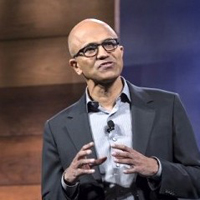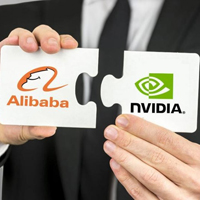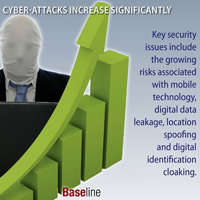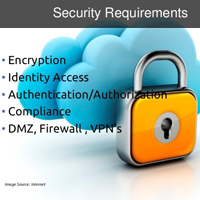In This Issue
- 3 Defining IoT Issues
- 2 Monetization Trends
- The Industrial IoT
- Report from the CEO
- Blair Switch Project
- Future of Information
- Global Infrastructure
- Enterprise Storage
- Microsoft Donations
- IBM Acquires Ustream
- Alibaba’s Nvidia Bet
- Hybrid Cloud: Enabler
- Cloud Is Accelerating
- Cyber-Attacks Rise
- Encrypt Mobile Cloud
- Blockchain Transacts
- Coming DCIA Events
Three Defining Issues for Internet of Things
Excerpted from JD Supra Business Advisor Report
 The Internet of Things (IoT) has truly become the Internet of EVERY Thing, where everything — from humans to agriculture to manufacturing to marketing — is connected.
The Internet of Things (IoT) has truly become the Internet of EVERY Thing, where everything — from humans to agriculture to manufacturing to marketing — is connected.
In an era of ever-evolving “wired” technology, increasing interconnectedness, and business and personal concerns about data security, we recently asked attorneys writing on JD Supra:
“What will be among the defining issues of 2016 involving the IoT?”
Here is what we heard back.
1. Security, Security, Security, Security, Security.
From Simon McDonald, Special Counsel at K&L Gates: “One of the defining issues of 2016 with the IoT will be the continuing challenges organizations will have in securing their devices and systems.
As organizations rush to make their products or systems smarter, they need to adequately address the increased vulnerability presented by smarter devices to their data, systems, and networks… Read More
Two Trends Driving Monetization of IoT
Excerpted from Information Age Report by Ben Rossi
 While all the talk at CES this year was on the Internet of Things (IoT) — from connected cars to smart home systems to wearables in healthcare — one aspect that isn’t being talked about is the practical and necessary component.
While all the talk at CES this year was on the Internet of Things (IoT) — from connected cars to smart home systems to wearables in healthcare — one aspect that isn’t being talked about is the practical and necessary component.
With that in mind, how exactly do organizations make money from this ubiquitous connectivity and the ensuing avalanche of data?
Key to this is the ability to quickly and easily create monetization, pricing and mediation schemes, enabling monetization business strategies that didn’t exist yesterday.
It doesn’t matter what one is trying to monetize — whether it be API calls, MRI machines, car services, security, voice services, storage, or access.
The IoT is one of the most hyped technologies of all time, but the huge upside has yet to materialize.
While many companies are driving customer service, operational, and supply chain improvements using the IoT, most companies are still working in the margins when it comes to monetizing it.
When companies upgrade their systems, only then can the hype be actualized… Read More
The Industrial Internet of Things
Excerpted from Lux Research Report
 There is tremendous hype around the burgeoning Internet of Things (IoT), and particularly in the industrial realm (IIoT) where many expect to find the biggest opportunity in the near term.
There is tremendous hype around the burgeoning Internet of Things (IoT), and particularly in the industrial realm (IIoT) where many expect to find the biggest opportunity in the near term.
Beyond the hype, the conversation lacks a clear definition of what the IIoT is and the role of different players throughout the value chain.
Plenty of effort has gone into making pretty pictures and estimating how many billions of devices will be connected by 2020 — there is still a great deal of confusion around how to approach the Industrial IoT and where the opportunities may lie.
The Lux Research Industrial Internet of Things Service will address questions including:
What business models are emerging to leverage connectivity?
What applications will be able to translate the IIoT from novelty to real growth?
Who are the major players in the emerging value chain and how is it segmented?
What are the essential components of IIoT system architecture… Read More
Report from DCIA CEO Marty Lafferty
 We’re now at the one-month countdown to the first of the DCIA’s co-sponsored events with the we.CONECT Group: the brand new Industry of Things World USA.
We’re now at the one-month countdown to the first of the DCIA’s co-sponsored events with the we.CONECT Group: the brand new Industry of Things World USA.
The focus of this inaugural event will be the industrial Internet, which has the power to dramatically alter the competitive landscape for several industries during the coming year.
Industry of Things World USA will take place on February 25th and 26th at the Hard Rock Hotel in San Diego, CA.
Over 500 industrial Internet ecosystem participants will attend, many of whom are deploying first-generation solutions that are creating valuable user case-studies.
Among the shared challenges that these pioneers are addressing are the lack of current standards, security concerns, as well as data and system integration issues.
Overcoming these in early Industrial Internet deployments will lead to first-mover opportunities for distinctive operational, strategic, and competitive advantages.
We developed this new conference based on learning from Industry of Things World Europe, which brought together more than 700 leading industry innovators from 264 companies representing 38 countries.
We’re pleased to share with you feedback, statistics, and interviews from that event in the conference review and post-event report.
Industry of Things World USA will feature four tracks covering the core issues affecting the industrial Internet: strategy, operations, data, and technology.
More than eighty speakers will present status updates, ranging from visionary keynotes to vertical market case-studies to technology spotlights.
There will be a start-up lounge showcasing the latest and most promising innovative new businesses in the industrial Internet space.
In addition to extensive networking opportunities, the event will also offer training sessions and workshops to maximize your opportunities to learn in a highly interactive environment.
You can now download the event brochure here to see the full program and special features we have in store for you.
And you can access the list of confirmed speakers here to see who will be there. Please register here with the discount code DCIA2016.
We hope to see you next month at the Industry of Things World USA. Share wisely, and take care.
Blair Switch Project: Accenture Tackles IoT
Excerpted from The Irish Times Report by Pamela Newenham
 When Alastair Blair joined Accenture Ireland’s graduate program in 1987, the company has just 70 employees.
When Alastair Blair joined Accenture Ireland’s graduate program in 1987, the company has just 70 employees.
Fast forward almost 30 years, and he is now the head of the company’s Irish arm, which employs more than 1,800 people.
Blair was one of seven people in the graduate program intake, and the only still remaining at the company 29 years later.
“The decisions you make as a teenager or in your early 20s are often more clear in your mind than the decisions you made last week. I opted to study engineering as my brother was studying it, and I was interested by what he did on the course. I then applied to Accenture after.”
Blair spent his first six weeks at Accenture learning how to program, before “being packed off to Germany” in early 1988.
There he worked with major financial services organizations on a broad range of strategy, communications, and business transformation programs, before going on to do the same thing in Luxembourg and Sweden.
Perhaps the biggest learning curve came in 1993, when he was sent to work for Accenture in Saudi Arabia.
“I had to adapt to a completely different style of work and culture. There were no women in the workplace, absolutely none… Read More
Future of Information: Cloud, Cybersecurity, Big Data
Excerpted from Investor News Daily Report by Morag McGreevey
 Sometimes it seems like every other business is a cloud-based company.
Sometimes it seems like every other business is a cloud-based company.
This Internet-based computing service has entirely transformed the way information is processed, organized, stored, and shared.
Indeed, it seems almost impossible to separate the explosion of big data from cloud computing.
However, the rapid transition from old school data management to the highly efficient data centers driving today’s markets has created a need for cybersecurity solutions.
With sensitive personal information, healthcare records, and financial records being managed by these systems, cloud security has emerged as a vital aspect of protecting this data.
As a result, cloud computing, cybersecurity and big data investment have formed an important nexus in the tech space.
Big data is a major source of demand for the cloud computing sector, encouraging further investment and innovation.
Research and Markets recently completed a report entitled “Global Cloud Security Network Market by Country… Read More
Global Cloud Infrastructure Hit $7.6 Billion in Q3 2015
Excerpted from CloudTech Report by James Bourne
 Global cloud information technology (IT) infrastructure, incorporating public and private, hit $7.6 billion in the third quarter of 2015, according to a research note from IDC.
Global cloud information technology (IT) infrastructure, incorporating public and private, hit $7.6 billion in the third quarter of 2015, according to a research note from IDC.
HP, with a 15.7% market share in 3Q15 and revenue of $1.18 billion, remains the top dog in cloud infrastructure according to the researchers, gaining in share from the previous year (15.0%).
Dell and Cisco are in joint second place — the result of two vendors being less than one statistical point apart — with revenues of $783 and $731 million and market share of 10.4% and 9.7%.
It was a similar story in the battle for fifth place, with NetApp, IBM, and Lenovo all too close to be separated, and EMC on its own in fourth.
The big winner over the past year was Lenovo, with an almost 750% revenue gain, while IBM was the major faller, dropping 42% in revenue year over year.
Cloud as the basis for overall IT infrastructure continues to rise, with more than a third (33.8%) of cloud infrastructure sales in 3Q15 compared to 28.7% a year ago… Read More
Enterprise Storage Migration: Reliability Is Key
Excerpted from CloudTech Report by James Bourne
 The latest research from Western Digital Corporation has revealed that reliability continues to be more important than cost for enterprises looking to move their data to the cloud.
The latest research from Western Digital Corporation has revealed that reliability continues to be more important than cost for enterprises looking to move their data to the cloud.
The survey, which polled 700 senior technology decision makers across three continents including in the energy, finance, and healthcare industries, saw cloud budgets remain the leading growth area in IT, with more than four in five (84%) either planning, are completing or have completed cloud migrations.
Yet as far as the UK is concerned, there is less cloud hype than suspected; two in five CIOs (39%) say they have less than 10% of their company’s data in the cloud.
80% of overall respondents say their storage demands are growing, while three quarters (74%) say they need to keep up with performance demands of applications.
More than half (55%) say they are not storing enough data to keep the business healthy long term; strategies for correcting this include data analytics (81% of respondents) and secure offline, or cold storage, and archiving (74%).
One of the more interesting parts of the research related to the Internet of Things (IoT)… Read More
Microsoft Donates $1 Billion Cloud Resources to NGOs
Excerpted from Tech Times Report by Anu Passary
 Microsoft Philanthropies, Microsoft’s charity arm, is set to donate $1 billion in cloud computing services over the course of the next three years to non-profits worldwide.
Microsoft Philanthropies, Microsoft’s charity arm, is set to donate $1 billion in cloud computing services over the course of the next three years to non-profits worldwide.
On Tuesday, Microsoft’s CEO Satya Nadella said that the initiative was a part of the company’s pledge to ensure that Microsoft Cloud’s services can be used for public good.
Through the program, Microsoft aims to offer support for over 70,000 NGOs worldwide on its cloud platforms such as Power BI, Office 365, Azure and CRM online in the coming three years
Microsoft Philanthropies will be pushing out the free Microsoft Cloud services to the non-profits by spring 2016.
“Microsoft is empowering mission-driven organizations around the planet with a donation of cloud computing services – the most transformative technologies of our generation.”
“Now more than 70,000 organizations will have access to technology that will help them solve our greatest societal challenges and ultimately improve the human condition and drive new growth equally,” revealed Nadella.
Moreover, the company also has plans of extending its program that offers free access to its Azure storage… Read More
IBM Acquires Ustream to Build-Out Cloud Video Unit
Excerpted from Talkin’ Cloud Report by Nicole Henderson
 With the acquisition of cloud-based live video streaming service provider Ustream, IBM is creating a cloud video services unit to offer a portfolio of video services including API development, digital and visual analytics, and delivery.
With the acquisition of cloud-based live video streaming service provider Ustream, IBM is creating a cloud video services unit to offer a portfolio of video services including API development, digital and visual analytics, and delivery.
San Francisco, CA based Ustream streams live and on-demand video to about 80 million viewers per month, for customers including enterprises and broadcasters.
The new IBM Cloud Video Services unit will be headed by GM Braxton Jarratt and combine assets from Ustream and Clearleap, the cloud-based video services provider it acquired in December. As ZDNet notes, IBM can “use the content Ustream broadcasts as a hook to sell its marketing and analytics services.”
“Video has become a first-class data type in business that requires accelerated performance and powerful analytics that allows clients to extract meaningful insights,” Robert LeBlanc, Senior Vice President, IBM Cloud said.
“Aligning our expansive video and cloud innovations into an integrated unit will create opportunities for clients to take advantage of this medium in the most strategic way possible.”
The core of the Ustream portfolio is its open Ustream Development Platform, which allows clients to create custom video apps… Read More
Alibaba Teams with Nvidia in Billion Dollar Cloud Bet
Excerpted from Bloomberg IT Business News Report
 Alibaba Group Holding will work with Nvidia Corporation on cloud computing and artificial intelligence (AI), and plans to enlist about 1,000 developers to work on its big-data platform during the next three years.
Alibaba Group Holding will work with Nvidia Corporation on cloud computing and artificial intelligence (AI), and plans to enlist about 1,000 developers to work on its big-data platform during the next three years.
The arm of China’s biggest e-commerce operator, known as AliCloud, will boost investment in data analysis and machine learning, it said on Wednesday.
AliCloud is staking $1 billion on the belief that demand for processing and storage from governments and companies will boost growth during the next decade as its tries to compete with Amazon in computing services.
The investment also reflects Alibaba’s own appetite for information processing as China’s online-retail market grows to $1.5 billion by 2020, according to Bain & Co.
The push into cloud computing, where software and services are provided to customers via remote data centers the size of American football fields, prompted Alibaba to open its second data center in Silicon Valley in October and prepare its first in Europe.
AliCloud’s rate of growth is one of the fastest among global peers, Simon Hu, the division’s President, said during a presentation in Shanghai… Read More
Hybrid Cloud: Great Enabler of Digital Transformation
Excerpted from CloudTech Report by James Bourne
 Almost nine-out-of-ten (88%) respondents in a survey conducted by tech giant EMC believe hybrid cloud capabilities are ‘important’ or ‘critical’ to organizations that wish to enable digital business transformation.
Almost nine-out-of-ten (88%) respondents in a survey conducted by tech giant EMC believe hybrid cloud capabilities are ‘important’ or ‘critical’ to organizations that wish to enable digital business transformation.
The study, which polled more than 900 respondents, with one third in EMEA, found an overwhelming need for digital business initiatives.
92% said their company’s strategy called for such, while 90% said digital business was a “top priority” within three years.
Almost two thirds (63%) claim they are already on their way to achieving digital transformation goals.
In particular, hybrid cloud enables increased IT agility, as well as making implementation of digital business initiatives easier, quicker, and less expensive, according to the survey respondents.
Improving customer experience was the most popular reason behind business change (87%), ahead of acquiring new customers (86%), increasing innovation (82%) and enabling real-time business decisions (82%).
“Becoming digital is a priority for nearly every business on the planet,” commented Jeremy Burton, EMC President of Products and Marketing… Read More
Why Cloud Computing Is Accelerating in the Enterprise
Excerpted from Forbes Report by Louis Columbus
 Translating time into dollars matters far more to many CEOs I’ve spoken with versus what platform their applications are running on.
Translating time into dollars matters far more to many CEOs I’ve spoken with versus what platform their applications are running on.
What matters most is getting all they can out of every hour their business is operating.
They are all focused on getting beyond the constraints that held their growth back in the past — everyone wants a growth accelerator today.
For manufacturers especially, this includes applications with depth of functionality that can be quickly deployed regionally, and in more cases than ever, globally as well.
Line-of-business leaders want applications that make an immediate impact on their entire value chain.
Just having a cloud strategy is not enough for any enterprise software company anymore.
Owning the pain prospects and customers go through daily to get work done is all that matters.
Every application and platform component needs to contribute to the goal of reducing customer’s challenges of doing business… Read More
Cyber-Attacks Increase Significantly
Excerpted from Baseline Magazine Report by Samuel Greengard
 A new report from security firm ThreatMetrix, Cybercrime Report 2015, illustrates just how huge the hacking and attacking problem is and what impact it has on organizations.
A new report from security firm ThreatMetrix, Cybercrime Report 2015, illustrates just how huge the hacking and attacking problem is and what impact it has on organizations.
During the period from July through September, the ThreatMetrix Digital Identity Network detected and stopped 90 million different attack attempts — an astounding 20 percent increase over the previous quarter.
The report also identified a number of key issues, including the growing risks associated with mobile technology; the need to balance security and convenience, particularly involving authentication; digital data leakage risks; location spoofing; digital identification cloaking; and the need for more sophisticated detection through analytics.
Key security issues include the growing risks associated with mobile technology, digital data leakage, location spoofing and digital identification cloaking.
Merchants rejected about 2.1% of transactions in August 2014, but the figure rose to more than 4% a year later.
The ability to recognize a device, identity or behavior is critical. The rate of recognition is above 95% in the US, but it’s lower in many parts of the world… Read More
Encryption for Mobile and Cloud Computing
Excerpted from Network World Report Sponsored by CDW
 As organizations increase their use of mobility and cloud computing, they’re finding it more complex than ever to create an effective security strategy and protect sensitive data.
As organizations increase their use of mobility and cloud computing, they’re finding it more complex than ever to create an effective security strategy and protect sensitive data.
Users demand access to data no matter where it is, as new technologies expand the perimeter of the enterprise network.
Organizations strive to keep this data out of the wrong hands, but the challenge to protect it is growing.
To address this challenge, organizations are employing storage encryption, which can be implemented at the disk level or at the file level.
IT departments implement full-disk encryption (FDE) to scramble the contents of an entire physical disk.
FDE protects data on a device until a user or administrator provides successful authentication.
Alternatively, file encryption can safeguard data in individual files, decrypting the file and making it available for access and editing when a user authenticates his or her identity.
The effective use of file encryption can prevent data breaches and help organizations achieve compliance with various laws and regulations… Read More
Blockchain: Distributed Transactions Change World
Excerpted from Centric Blog by Ben van Lier
 The American mathematician and A.M. Turing Award winner Leslie Lamport is one of the founding fathers of distributed computing and distributed algorithms.
The American mathematician and A.M. Turing Award winner Leslie Lamport is one of the founding fathers of distributed computing and distributed algorithms.
Back in 1978, he defined distributed computing thus: “A distributed system consists of a collection of distinct processes which are spatially separated, and which communicate with each other by exchanging messages.”
“A network of interconnected computers such as the ARPANET is a distributed system.”
In an age when there were no such things as the Internet, the Internet of Things (IoT), or advanced manufacturing, he worked on distributed algorithms that have helped make these developments possible.
Without the trailblazing by this founding father of distributed computing, today’s blockchain technology hype would have been unthinkable.
A key requirement in the development of distributed computing is that a system made up of distributed processes has to be able to keep functioning, even when one or several of its components have ceased to (reliably) contribute to the functioning of the system as a whole. When it comes to reliability, Lamport is unequivocal… Read More
Coming Events of Interest
Industry of Things World USA — February 25th-26th in San Diego, CA. A new international information exchange forum featuring four concurrent tracks covering business model generation, technology and infrastructure, data management, and security.
IoT Asia 2016 — March 30th-31st in Singapore. IoT Asia returns in 2016 with fresh insights on Internet of Things (IoT) developments around the world. The 3rd edition aims to further advance conversations and ideas on IoT and how it will impact our lives by delving into the real issues.
Delivery of Things World — April 25th-26th in Berlin, Germany. DevOps specialists, continuous development strategists, architect newbies, development geeks, and cloud geniuses from across the spectrum of DevOps transformation come together at this stimulating and innovative event.
DataCloud Europe 2016 — June 8th-9th in Monte Carlo, Monaco. The 2016 conference will focus on cloud computing advances and changes in data management, with a stellar line-up of speakers including global infrastructure leaders and subject matter experts.
Cloud and DevOps World Forum 2016 — June 21st-22nd in London, England. Now in its eighth year, C&DWF is firmly established as the leading content-led exhibition for the European Cloud and DevOps community and the premiere meeting place for CIOs.
Security of Things World — June 27th-28th in Berlin, Germany. Topics include securing cyber physical systems for IoT, expanding IT security with intelligence-led ops, business continuity management considerations, data privacy in an interconnected world, and security strategies.
Industry of Things World Europe — September 19th-20th in Berlin, Germany. IoT business models, new IoT markets and strategies, product lifecycle management, next generation data handling and value assessment, IoT organizational impacts, and IoT security issues.
